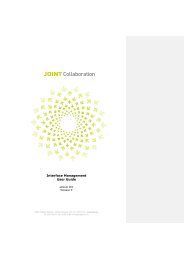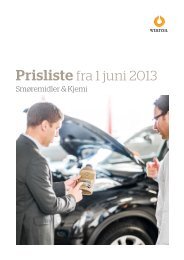Ida Ekblad MarIus Engh anawana haloba lars lauMann - Statoil
Ida Ekblad MarIus Engh anawana haloba lars lauMann - Statoil
Ida Ekblad MarIus Engh anawana haloba lars lauMann - Statoil
You also want an ePaper? Increase the reach of your titles
YUMPU automatically turns print PDFs into web optimized ePapers that Google loves.
1. Friedrich Nietzsche,<br />
The Birth of Tragedy (1886).<br />
Installation view: Lycanthropic Chamber, 2008, StAndArd (OSlO), Oslo, Norway<br />
It is at this point that we manage to glimpse<br />
(in what seemed to be dry and essential<br />
geometric forms) the dismantling of tools of<br />
torture, objects that in some way lead back<br />
to the human figure, contemplating it as the<br />
subject of its function. These objects have<br />
assumed a different and almost opposite<br />
formal value to the originals, which were used<br />
as the analytical instruments of a particular<br />
point of view and which have transformed<br />
their nature into a narrative element. What<br />
seems to be the effective subject of this<br />
transformation is the myth hidden behind the<br />
image of the lycanthrope.<br />
Myth, closely linked to the concept of<br />
history and archaeology, serves as a reference<br />
point for reflection in <strong>Engh</strong>’s work. The artist’s<br />
research is linked to Myth in a similar way. He<br />
searches for those traces that go beyond what<br />
is visible, pushing into the universe of thought<br />
where the attainment of reality occurs through<br />
intangible and indemonstrable forms, the<br />
abstract concept to which the artist reduces<br />
the form originally carrying specific meanings<br />
The Greek word “mythos”, the meaning of<br />
which can be expressed by the concept of<br />
“irrational discourse” or legend, immediately<br />
indicates to us the almost “supernatural” sphere<br />
to which it refers. In this perspective, the work<br />
of the artist can be re-interpreted as the search<br />
for myth and its roots, for myth in its multitude<br />
of meanings but especially as the guide, spirit<br />
and soul of history and humanity.<br />
In our days we are much concerned with killing<br />
the myth. Today humans are left deprived of<br />
the myth, starving among all its antecedents<br />
and have to dig in panic for roots, even if it<br />
should be in the distant antique past. 1<br />
According to existential psychologist Rollo May,<br />
contemporary society is in crisis because of<br />
its loss of values and consequently of identity.<br />
May, reflecting on Nietzsche’s claim that God<br />
is dead, concludes that new myths must be<br />
sought and created to symbolise new values<br />
that will help and sustain Man in his endeavours<br />
to improve his existence.<br />
If we start from this assumption, <strong>Engh</strong>’s<br />
latest project Exhume To Consume can be<br />
better understood; more than the others, it<br />
enters into a dialogue directly with myth, its<br />
necessity and its creation.<br />
61

















